One of the great privileges I have had in my role as historian of our small town is that of having been allowed to closely examine many of the documents and artifacts preserved by the descendants of past members of our community. The families of our very earliest settlers, the Suttons and the Rannells, have trusted me with many of their rarest items. I am humbled by that. I take the responsibility very seriously.
Followers of my blog know that recently I have been reconstructing a very small part of the lives of some members of the Sutton family. One man in particular is a standout. He was William Lyman Thomas, a son-in-law of our very earliest settler, James C. Sutton. He was a publisher and a prolific writer.
In 1911, he published a two volume set titled, “History of St. Louis County, Missouri”. The set must have been his magnum opus. I have, of late, been examining what I believe is the set that once was Thomas’ own. In addition I have been allowed to closely examine and copy some of the documents and many of the photographs that Thomas had solicited for and used in his set.
This set is a masterpiece. The amount of information contained within these two books is amazing. The first volume is a general history of the county. The second volume is biographical sketches of about four hundred important men in our county. That’s Four Hundred!! Most amazing of all is that Thomas seems to have nearly all of the writing himself.
I have also been privileged to closely examine and photograph several of Thomas’ personal scrapbooks. He is careful to note which articles were written by him and which were written by others. It is very easy to tell how much he wrote of the nearly one thousand pages that his two books contain! Check them out. I found the first volume in Google books.
Born in 1846, Thomas would have been 65 years old in 1911. He would go on to live another seven years. He passed on July 19, 1918 having lived less than one year longer than his wife, Kate who passed on August 28, 1917. There is evidence that it was a very rough time for him. He had been ill for two years compounded by the loss of his treasured wife.
I would imagine that his two volume set can be found in most of the reference rooms of our county libraries. The first volume has been reprinted. The second volume has not. Curiously the party that reprinted the first volume does not even mention the existence of the second volume. It seems like that’s a fact that would be useful to persons interested in the subject. The reprint does contain an index which the original does not.
In this and the next post or two, we’ll take a look at some of the items related to his masterwork, the History of St. Louis County, Missouri. Again, none of this would have been possible without the generosity of the descendants of William Lyman Thomas.
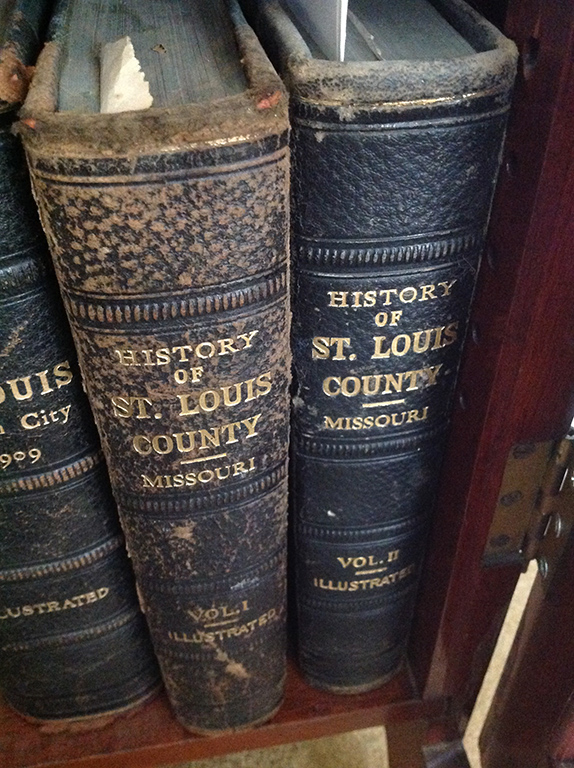
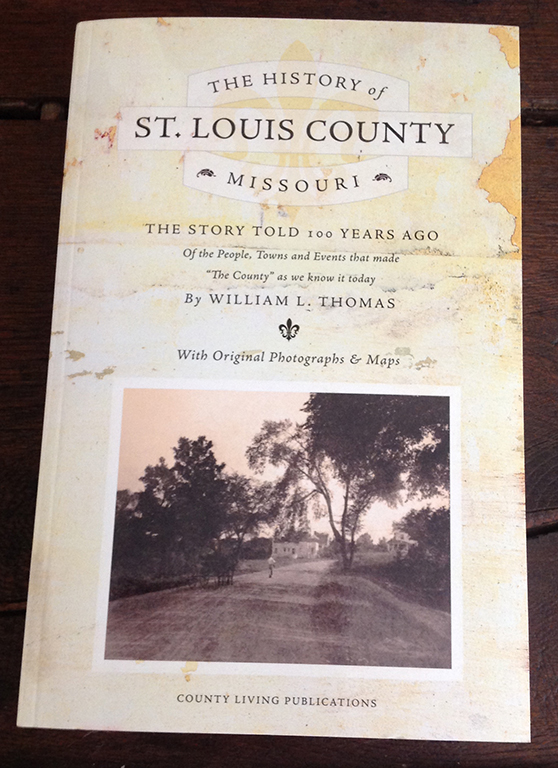
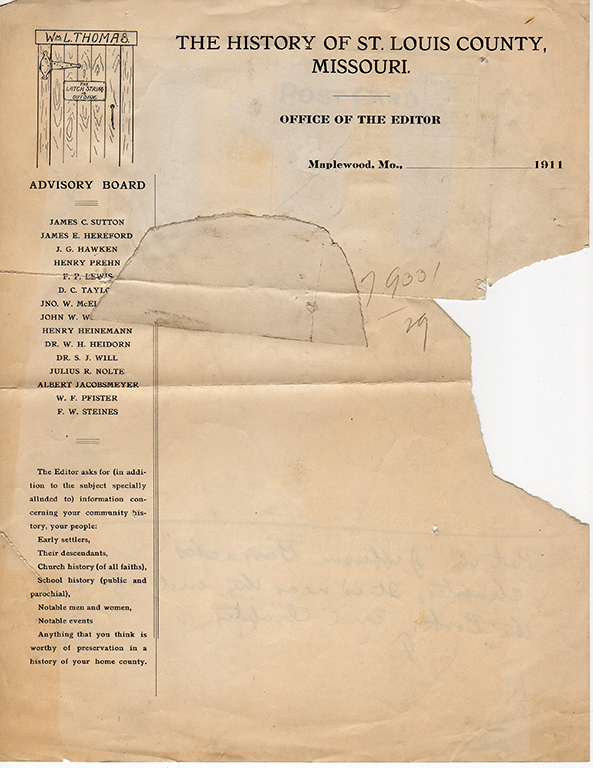
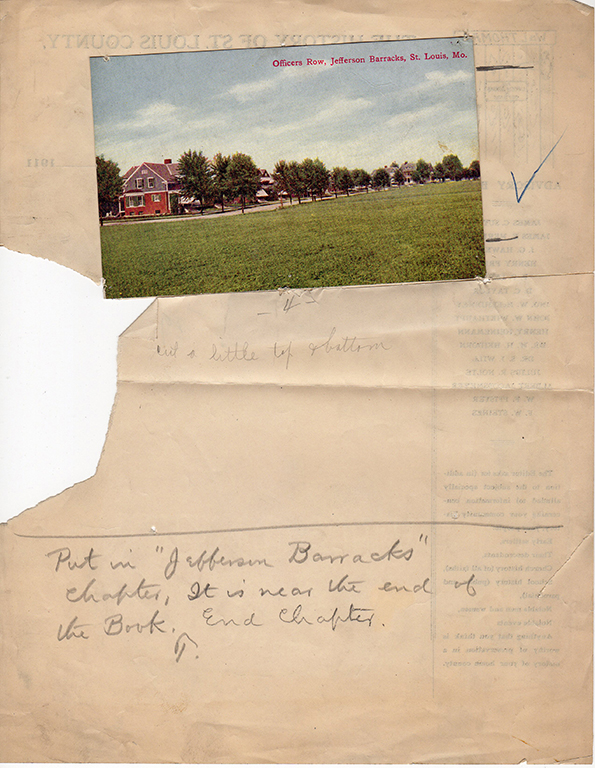
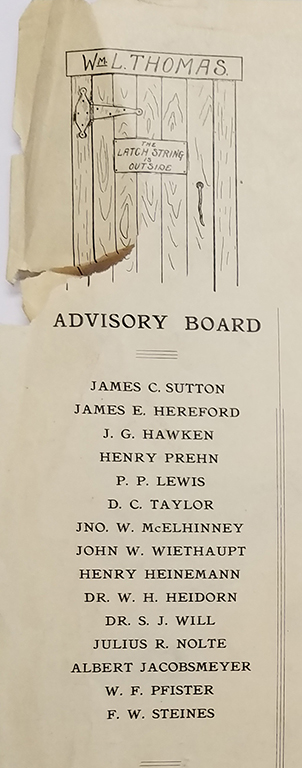
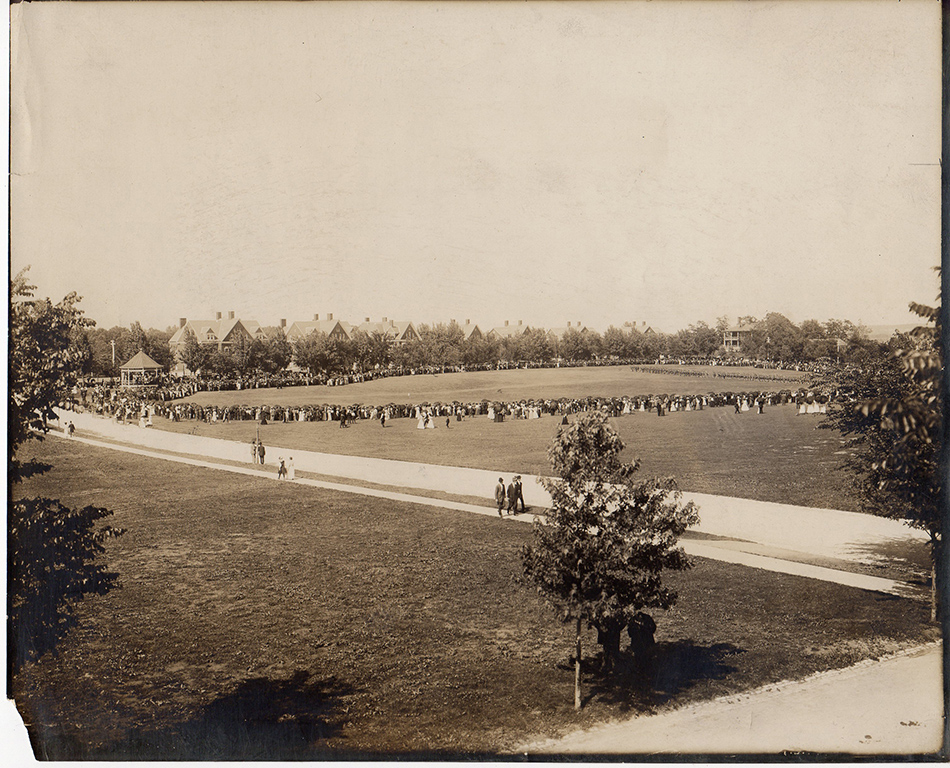
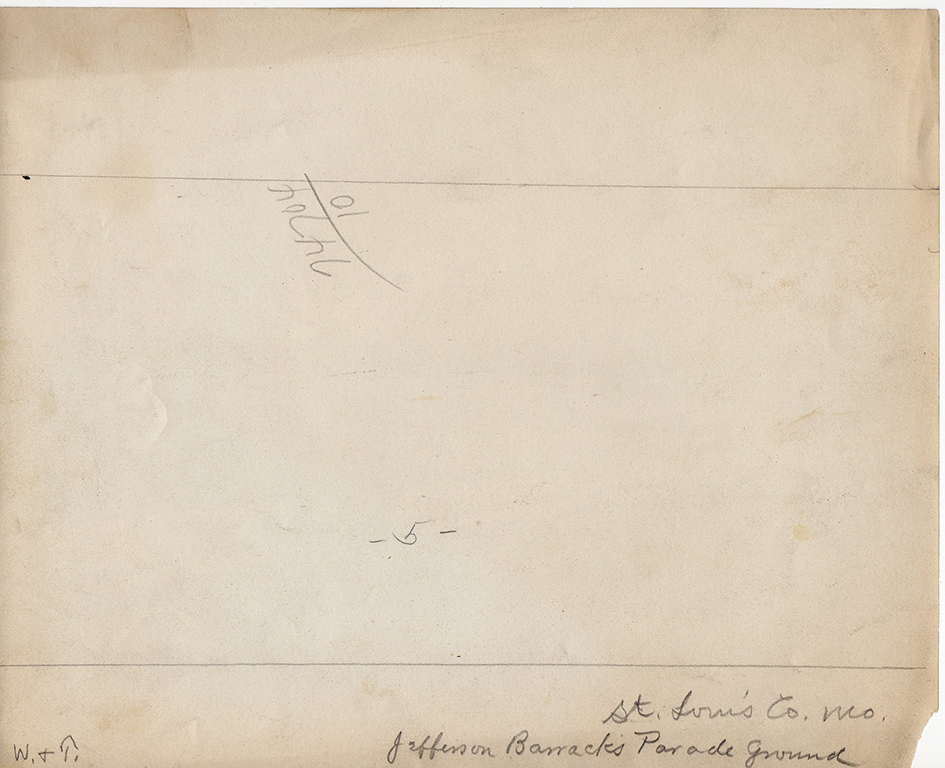
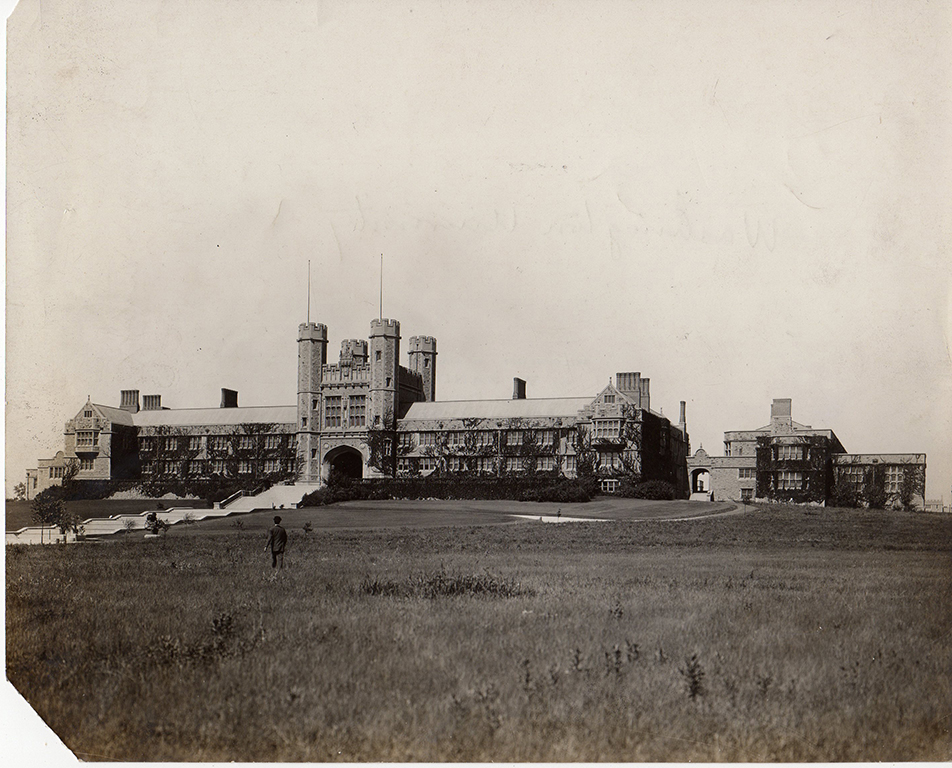
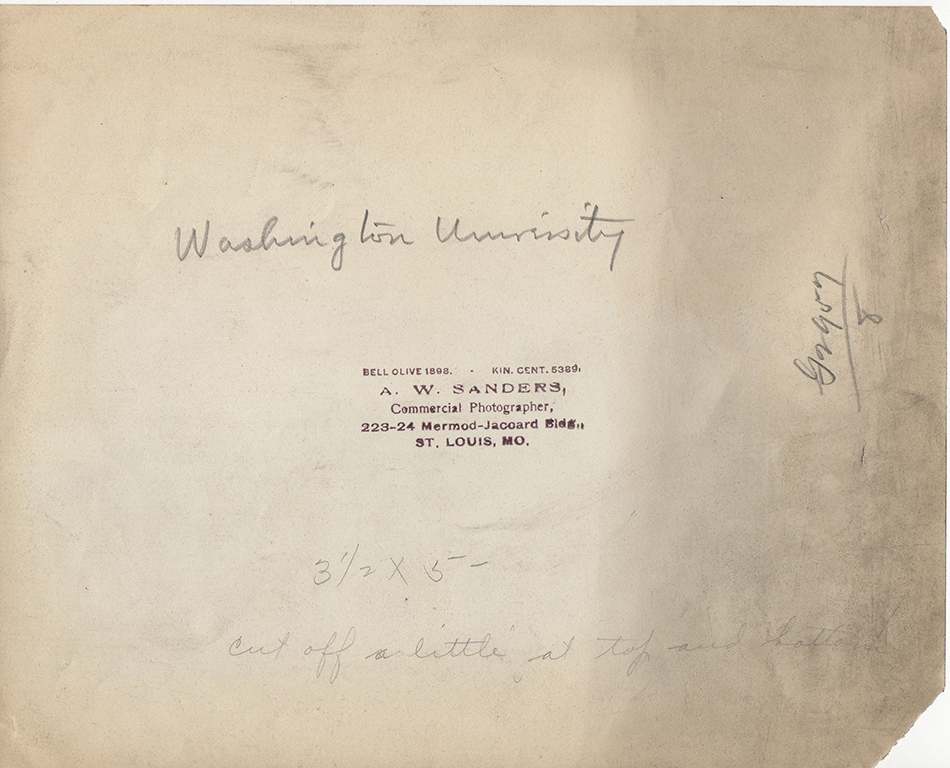
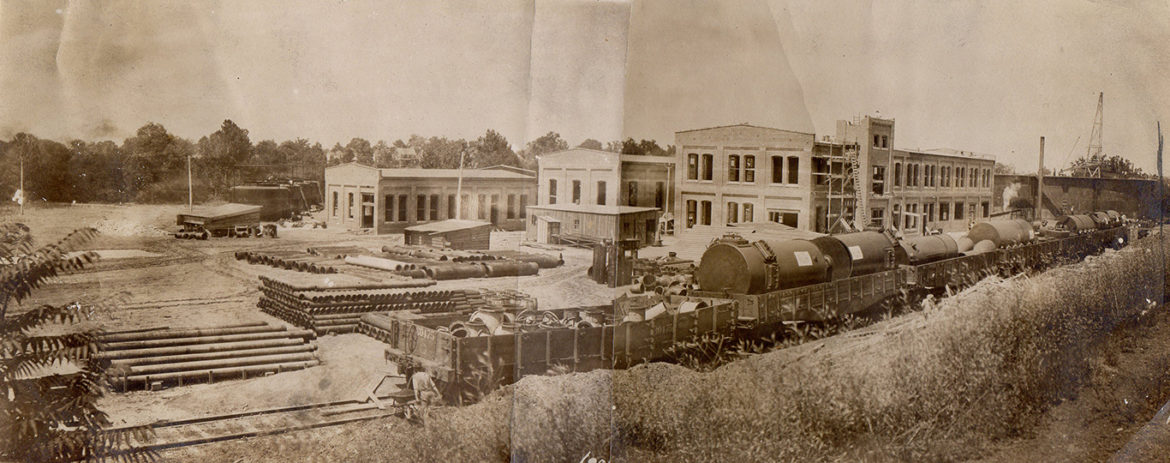
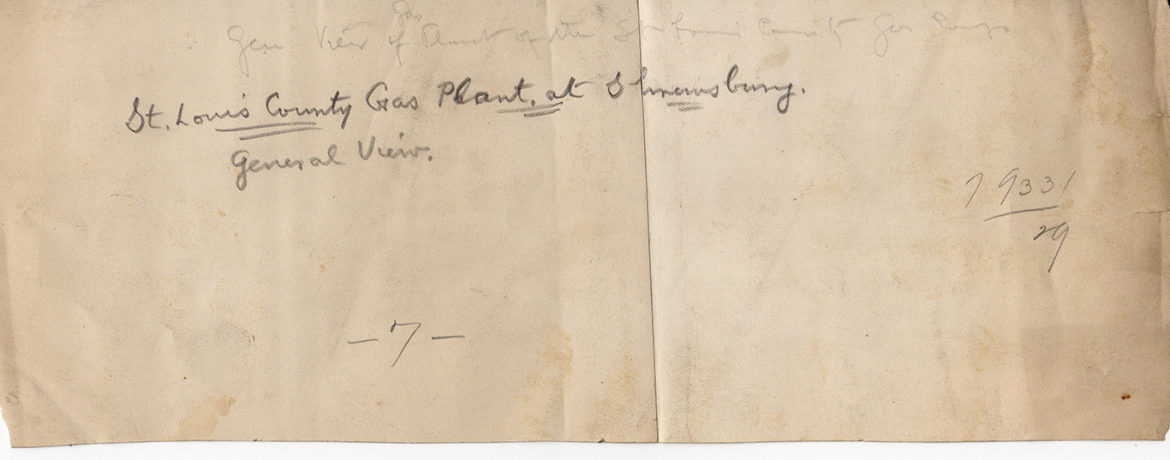
I suppose for the convenience of the readers I ought to try and somehow organize this mixed bag of images and documents but I’m not going to do it. I do most of this stuff pretty late at night. I just don’t need for it to take any longer than it is taking. Feel free to copy everything and organize it anyway you care to. (I have thought about these last four sentences ever since I wrote them. They make me sound like a crank which I’m not. It was just late. I won’t delete them because I dislike that Orwellian aspect of this modern way of communicating. DH 3/1/19) I will try and get a lot more of this stuff out in the next several posts.
Truly we owe our thanks to the folks who have let me copy all of this and share it with you.
Doug

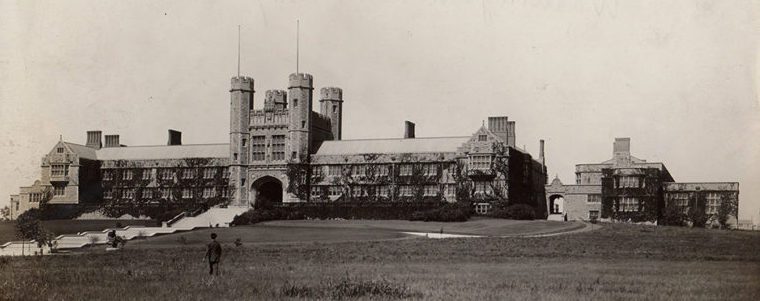
These kind of stories make me wonder about what is being made in some of the places around town. We have several business/ manufacturing plants in the areas and I sometimes wonder how safe they are. I remember the LP gas cylinder explosions in St Louis a few years back and how dangerous that was.
Of course I am probably not really thinking of all the variety of chemicals, aresoel cans and gas cans, paint thinners, etc that I have sitting around in my house not to mention the gas stove, furnace and water heater that could rupture and blow something up at any moment.
What did Tretolite make anyway? Cannot remember every hearing about it before.
Mark.
Petrolite Corporation, headquarted in Webster Groves, manufactured and marketed specialty chemicals. Petrolite’s Tretolite Division produced and marketed products for oil field and refinery applications. Tretolite’s primary products were “demulsfiers” for resolving water-in-oil emulsions and “corrosion inhibitors” for protecting the piping in oil wells and refineries. Ethylene oxide (ETO) and Propylene Oxide (PRO), both of which can be explosive under certain conditions, were used in producing most of Tretolite’s demulsifiers. Due to the volatity of ETO and PRO, these reactions were conducted in pressurized vessels. I worked in Tretolite’s R&D Department from 1968 to 1997. It’s my understanding that in the early 1950s several gallons of ethylene oxide once exploded, causing nearby slab-homes to be moved off their slabs and windows to be broken as far away as the intersection of Big Bend and Manchester. It was determined that this explosion was due to a piping design flaw. Once the flaw was fixed, no further explosions ever happened. Petrolite was sold to Baker Hughes in 1997. After the sale, manufacturing at Webster Groves was discontinued and nearly all of the employees had to move to new facilities in the Houston area. Rather than move, I found a job in the drinking water industry. The site is now occupied by various companies, including one which was formerly a division of Mallincrodt. It’s my impression that commercial-sized chemical production is no longer conducted at this site. On a related note, Melvin DeGroote, a long-time Tretolite R&D Director, was a profilic inventor. At the time of DeGroote’s death in 1963, Thomas Edison was the only American who had been granted more US patents than DeGroote.
I believe they moved the production facilities to the Houston area sometime in the 1980s. My dad also worked in R&D and remember he mentioned rumors going around the office that eventually the entire Tretolite operation was going to be transferred to Texas.
Todd,
Thanks for your reply.
Earlier today I spoke with Mike, a friend of mine who has worked at Petrolite (now known as Baker-Petrolite) since 1974. Mike stated that Petrolite opened its Bayport, TX. plant in the 1980s, and that after a few years its production exceeded that of the Webster Groves facility. (The advantage of the Bayport Plant was that it was closer to both its raw material sources and its customers). The Webster Groves plant continued to operate, at a reduced production rate, until about 1990. As I previously mentioned, once Baker Hughes bought Petrolite in 1997, nearly all Petrolite personnel moved to Houston, which allowed the Webster Grove site to be re-developed for other uses. I know that Baker-Petrolite operated an Environmental Lab at Webster Groves as recently as 3 years ago.
The gas plant popped into my mind before I saw the caption. They eventually had several of the “Gasometers” (Big storage tanks” at that sight. I have a lot of photos of Frisco trains leaving the yards and we gave the area the nickname of “Monument Valley” because of all of them.
I remember their shop whistle blowing for the shift changes and at noon. We could hear that whistle, Lindenwood roundhouse on the Frisco, Tretolite in Webster and one other that I never figured out where it was. All steam whistles.
Hey Don, You have quite a few great recollections. We’re all ears. Thanks for another one.
My dad worked at Tretolite from the mid 1960s – mid 1990s. When I was in grade school at St Mary Magdalen I could hear the whistle blow at noon everyday. I forgot about that until I read your post.
I don’t remember what year it was, but one of the boilers exploded with a horrendous boom. We lived on Flora between Big Bend and Sutton and it really shook our house. Louder than a sonic boom. Used to hear them a lot back then.
I have a ton of good memories from Maplewood, where I grew up from 1944 when we moved on Flora from Brentwood until 1962 when I enlisted.
When I was discharged in 12-65, I went to work at Sunnen until 7-92. We bought a house on Rannells when I got out of the Army and lived there until about 1978.
I’ve always been a diehard railroad enthusiast since my Dad was a Frisco engineer who hired out in 1916. I spent a lot of time in the Lindenwood roundhouse when I went there with him to do union work. I also spent a lot of my summers at the Maplewood depot on the Missouri Pacific until all the steam engines were retired.
I worked at Tretolite during the same time period. When Baker Hughes bought Tretolite in 1997, my job was transferred to Sugar Land, TX. Rather than move, I was lucky enough to find another job in St. Louis.
The Webster Groves Tretolite Plant used ethylene oxide and propylene oxide to make a significant fraction of its products. It’s my understanding that in the early 1950s several gallons of ethylene oxide exploded. Due to the intensity of this explosion, nearby slab-homes were moved off their slabs and windows were broken as far away as the intersection of Big Bend and Manchester. (Note: Since the explosion occurred much before my tenure, I can’t vouch for the accuracy of the details. However, I can vouch that both oxides were routinely used in the plant and that they need to be handled with care). The explosion was due to piping design flaw. Once the flaw was fixed, no further explosions ever happened.
I’ll bet that’s what it was. For some reason boiler explosion popped up when I was remembering it. It was horrendous, whatever it was.
I ordered volume one off amazon for my mother-in-law for Christmas. She really has enjoyed reading this book!! Especially since she has lived in St. Louis County her whole life. Great suggestion Doug !!
I agree with you, Brenna. It is a fascinating read and it’s about our own county. Thanks for your enthusiasm.